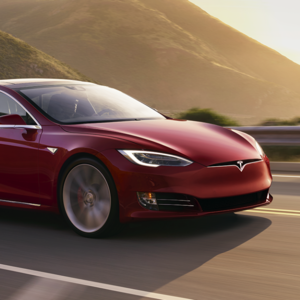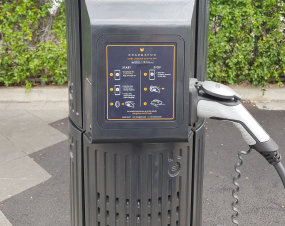Few motorists could be expected to reliably describe the cocktail of chemicals spilling out of their exhausts every day. Could you name more than just carbon dioxide? But what about the rules behind those emissions, or the fuel efficiency of the vehicle? Australia at least has rules in place for that… right?

The Great American Smokescreen
The State of California has been embroiled in a vicious and highly public back-and-forth with the Trump administration for a while now as they fight to keep their state-enforced vehicle emissions standards. The US Federal government froze nationwide requirements early last year — supposedly to reduce vehicle costs — and this September they officially revoked California’s right to impose their own rules.
California has a long history of leading the US in emission standards. They were responsible for some of the first standards in the world after Federal rules were altered in the ‘70s. Under the revised legislation California was permitted to set its own standards that are “at least as protective of public health and welfare as applicable Federal standards”.
But after Trump froze Federal requirements in 2018, it didn’t take long for him to turn against the renegade state and its competing standards. Because California accounts for such a large proportion of the US auto market, their rules inform the de-facto national standard. It’s cheaper for automakers to adhere to the stricter rules everywhere than to produce separate vehicles for different US states.
California has fought back consistently through the US court system and the battle looks no likelier to end today than it did in September. Leading vehicle manufacturers have been forced to pick sides — four automakers continuing to follow the overruled Californian rules were subpoenaed by the Trump Justice Department this week: Ford, Honda, BMW, and Volkswagen.
On the other side are GM, Toyota, and Fiat, who have each elected to support the weakened Federal standard. A number of states, legislators, and politicians have inserted themselves at different points in the conflict and news outlets have followed the events closely as they unfold.
We’ve also got to distinguish between ‘fuel efficiency’ and ‘emissions’ standards. The Californian rules under-fire here are essentially both; they limit vehicle emissions and enforce minimum fuel efficiency on new vehicles. Burn less fuel and emit less CO2; it’s simple. It also saves money for whoever is buying the fuel
The same can’t be said in Australia.
Standards… what standards?
Despite our national commitment to the Paris Climate Agreement, Australia is the only OECD country without fuel efficiency standards. Fuel efficiency on Australian vehicles is significantly worse than elsewhere; academics at the University of Queensland concluded that our drivers could have saved over $1 Billion AUD by this year if we’d adopted internationally harmonised emissions legislation in 2016.
The gap between our cars’ emissions and those elsewhere isn’t just a few percentage points. On a grams-of-CO2 per kilometre basis, official figures reveal that Australian vehicles emit about 50% more than Japanese equivalents. For the EU, it’s 45%. Even the gas-guzzling USA puts out 20% less CO2 than we do.

But those official emissions figures aren’t completely accurate. The NEDC test cycle used to assess efficiency is wildly unrealistic for real-world use. The real figures are much worse, and the gap between ‘official’ and ‘real’ emissions numbers has been growing worldwide.
Even if we put aside the issue of vehicle emissions — we shouldn’t, but for the sake of argument — and just look at the cost of fuel, there’s no arguing that better efficiency isn’t good for drivers. Nobody wants to be paying a fortune at the bowser; the cost of running a car is steep enough without the added burden of poor fuel efficiency.
Problem solving
So where do we go from here? The obvious first step is to implement some national regulations for emissions and efficiency standards. Being the only country in the OECD without them is costing drivers, bringing down our air quality, and contributing significantly to Australia’s poor climate record.
But let’s be realistic here — successive federal governments have been dragging their feet on emissions standards for decades; the odds of them pulling it together now are not good. Thankfully, there is another way.
It’s no secret that electric vehicles are the ideal long-term solution to both efficiency and emissions. No exhaust; no CO2; no petrol; no worries. EVs cost significantly less to run and maintain than combustion cars and they neatly sidestep the issue of emissions standards altogether.

Running a nationwide network of EVs would push the emissions question from vehicles to the national grid which, even when it runs on coal, is still significantly more efficient and less polluting than a combustion car engine. Those engines only bring 17-21% of the fuel’s energy to the wheels and can’t benefit from the same economies of scale that commercial power can.
Plus as our grid’s power becomes greener, so too does our national vehicle fleet. Alternative solutions like hydrogen fuel may seem appealing but their efficiency just isn’t on the same level.
Unfortunately, pro-EV policy is just as thin on the ground as fuel efficiency regulations in Australia. Once again, we’re one of the only developed countries without a dedicated plan for supporting the transition away from combustion.
The roadblocks keeping EVs out of Australia
While the battle continues over US emissions standards, we’ve got to recognise our own lack of action on any of these issues. Developing and implementing pro-EV and emissions-reduction policy is not impossible; our neighbours and allies, have been on-board for decades. What’s stopping us?
Check back to the JET Charge blog for more EV news every week. You can follow our Facebook page for updates or contact us at info@jetcharge.com.au with EV charging enquiries Australia-wide.




